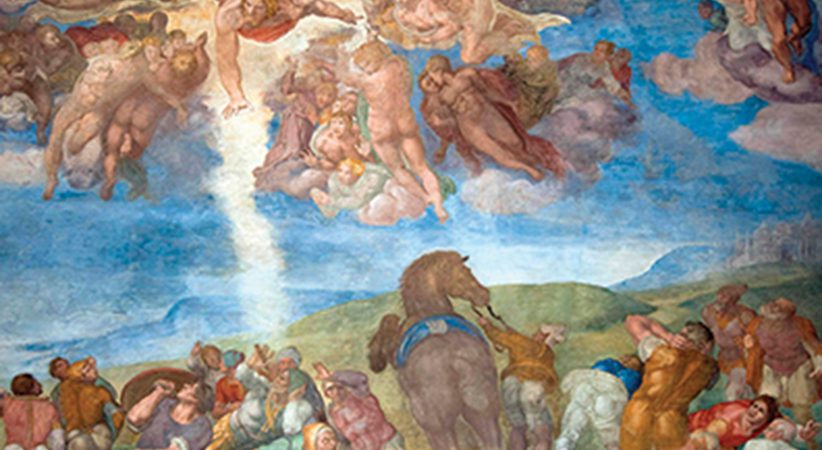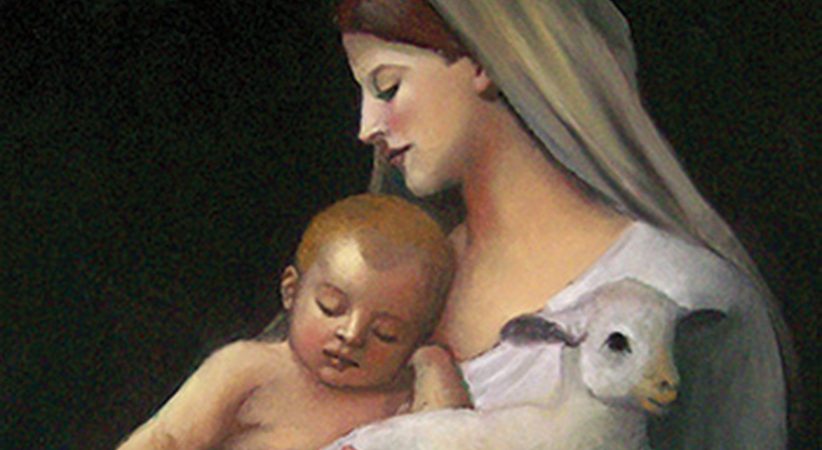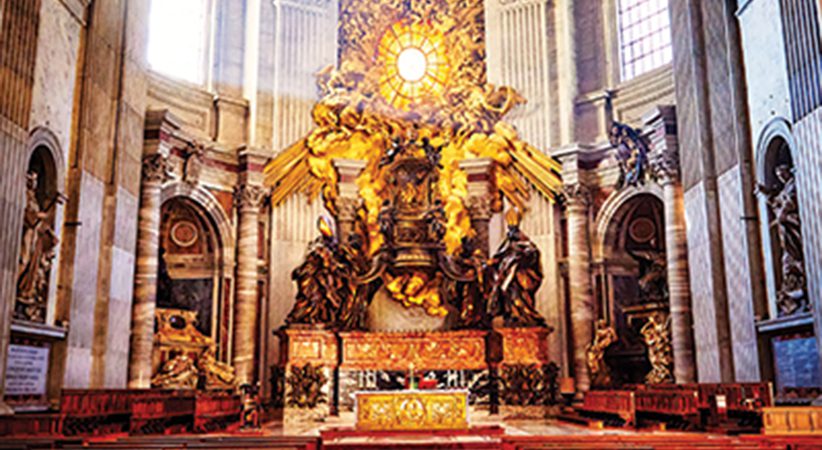Tips for Your Easter Homily
Success takes time and spiritual work
Father Joshua J. Whitfield Comments Off on Tips for Your Easter Homily
Easter preaching isn’t easy; it never has been.
Ask Mary Magdalene. When, with the other women, she told the disciples Jesus was alive, that they had seen him, Luke writes, “their story seemed like nonsense” (Lk 24:11). Even the Twelve were at first incredulous. Also, ask Paul. In Athens, preaching in the Areopagus, he did great until he mentioned the “resurrection from the dead,” when they began to laugh, inviting him back “some other time” (Acts 17:31-32).
Preaching Easter, the resurrection of Jesus, isn’t easy. Standing before a large congregation, the frail herald of an awesome truth, before the faithful and merely cultural, is intimidating. It’s been so since the beginning. Which is why we preachers shouldn’t worry too much about worrying about our Easter homily, because it’s normal. We’re in good company. It just means we must earnestly prepare, take up the difficult work of it and breathe deeply of the Holy Spirit. We must find grace in searching for the risen word, the work of heart and mind.
Be Grateful
First to be addressed is the spirit of the preacher himself, probing his own emotions and motives as his preparation begins. He must ask honestly whether he possesses what St. Augustine taught was necessary to all preaching, and that’s hilaritas — that is, he must pray for and find within himself, before anything else, joy. Because without it, the Resurrection cannot be preached.
| The ‘Living Stone’ |
|---|
|
“Easter is the feast of tombstones taken away,
rocks rolled aside. God takes away even the
hardest stones against which our hopes and
expectations crash: death, sin, fear, worldliness.
Human history does not end before a tombstone,
because today it encounters the ‘living stone,’
the risen Jesus.”
— Pope Francis, Easter Vigil, April 20, 2019 |
Now, this can be challenging; at least it was for me as a young preacher. Seeing so many show up, not seeing many of them since Christmas; all the work, the liturgies, the preaching; and here they all are asking where the bathroom is. I must admit, for a long time it wasn’t hilaritas at work in me; it was more like resentment. As a preacher, I had to deal with that. It took time and spiritual work to discover the joy necessary to preach the Resurrection.
I had to learn to be grateful for those who had come, all of them. It took time. But seeing through the years how God has slowly worked — intimately, invisibly, surprisingly — in souls I wouldn’t have guessed open to grace or change, I have learned my resentment was merely pride, un-evangelical and ineffective. As a preacher I learned to hope more and criticize less, to be open to the miracle the Resurrection may have even on the most dead-looking souls, and to preach like it was dawn and not dusk. Again, this took time, and I can’t really tell you how to do it — to find this joy — only that you must if you’re to preach the Resurrection well — or at all. So, pray for it.
The Abstract Isn’t Powerful
Preaching the Resurrection in the abstract doesn’t work. When Martha said to Jesus, “I know he will rise, in the resurrection on the last day” (Jn 11:24), she was still angry, in pain. The mere doctrine didn’t comfort her. This is why the next thing Jesus said was, “I am the resurrection.” With this statement, he made the doctrine personal, forever binding our understanding of the Resurrection to himself. Which is the point: To preach the Resurrection effectively, one must preach Jesus, not an abstract idea.
Easter is no time to argue with rationalists, no time to academically explain the mystery. It’s a trap for a preacher to think he needs somehow to prove the Resurrection. Rather, he must simply bring his listeners into the narrative, into the story of Jesus, which within the Mass becomes sacramental, a real encounter.
Our rhetoric and liturgical aesthetics are not syllogisms. Instead, they constitute a mystical witness behind which is the risen Lord himself. And so, the preacher should remember that the story of Jesus itself is sufficiently persuasive, that it’s the risen Lord who will finally convince, not our arguments. Like Mary Magdalene, we’re simply to speak from our own experience — that we’ve seen him, that he’s alive. God will do the rest.
Welcome into Liturgical Time
But to tell the story well is to tell it liturgically, not just biblically. This is why preachers must welcome listeners into liturgical time, especially those only showing up Easter Sunday. If the task is to bring listeners into the story, the preacher must sometimes catch listeners up — gently, briefly and without condescension. Because context matters; to hear of the Resurrection, one must note the death. As the angel said, “You seek Jesus of Nazareth, the crucified” (Mk 16:6).
Rhetorically, the preacher accomplishes this by giving Easter Sunday liturgical context. Doing so locates the Resurrection within the story of Jesus, which makes it less abstract, more beautiful and believable.
It can be as simple as referencing a talk about the Stations of the Cross with the school kids earlier in the week, or saying, “You know, he died just the other day.” Any way to widen the aperture of the imagination of listeners to see not just the empty tomb but also the cross and Upper Room, helps them experience the drama and movement of the Triduum Sacrum, which is simply the movement of the Gospel narrative itself. It’s what happens when time and story are experienced together: The story is enlivened. And again, this matters because the story makes sense of propositions.
To get the punchline, for instance, it helps to hear the joke. To read the final chapter of a novel isn’t normally very moving. To grasp a proposition like “Jesus is risen from the dead,” therefore, it helps to know the whole story. We are wired to know stories; we innately find them appealing. This is what the liturgy does: It tells the story. And so, welcome listeners into liturgical time. Because it brings the story alive.
Preach Resurrected Lives
Good stories envelop us — that is, we imagine ourselves in a good story; we’re changed by it. Good stories also change the world in which we see ourselves. It’s the difference between good and bad literature. The same is true of the Gospel. It’s proven by the lives it’s changed. The story of Christ having been rhetorically opened and enlivened, what remains are the exemplars, those who lived like death were stingless. Their stories, too, give the Resurrection context, help it make sense. Therefore, it’s good to preach about the saints, and not just those canonized.
Preaching the Resurrection in liturgical mystery, it’s fitting then to preach, like cause and effect, about those many men and women who’ve lived resurrection lives — for example, the martyrs, who laughed at the cruel power of Rome; or Martin Luther King Jr., loving even violent racists, who said, “Do to us what you will, and we shall continue to love you”; or Dietrich Bonhoeffer, who when facing death was said by his executioners to have beamed with happiness. “Easter should make rebels of us all,” according to theologian David Bentley Hart. And so, preach the many sainted rebels, those living icons of Easter. They too help us experience the Resurrection.
Whence Beauty?
And then, all that’s left is to wonder at the beauty of it. The story, the liturgies, the witnesses and saints: all of it’s the beauty, which is the effect of the Resurrection, like dawn in a dark world. St. Augustine taught that Jesus was “beautiful in inviting life, beautiful in not worrying about death, beautiful in giving his life and beautiful in taking it up again.” This is the beauty which, once a preacher paints it with his words, he only needs to ask listeners to see it, to admire it and to become beautiful themselves.
At the end of it all, this is why we preach, sometimes trembling, every Easter before celebrating the Eucharist, sometimes nervous or awkward like Mary Magdalene and so many since. It’s why we work so hard to preach well, to evoke the longing for God resting in even the most stubborn hearts. Because it’s a desire we know the Lord does not disappoint, but which he fills with his presence, as sacrament perfects word. Like another resurrection.
FATHER JOSHUA J. WHITFIELD is pastoral administrator at St. Rita Catholic Community in Dallas, Texas, and author of “The Crisis of Bad Preaching: Redeeming the Heart and Way of the Catholic Preacher” (Ave Maria Press, $17.95).
……………………………………………………………………………………………………………………………………………………..
The Way Beauty Works
The preacher’s hope, homiletically speaking, is to invite listeners to desire the grace to live beautiful lives, saintly and fearless, because death is dead. It’s to bring them to the Eucharist wanting whatever the Resurrection offers, to fill with longing for the words they are soon to hear and speak, gilded in the light of Easter holiness and expectation. If they see the beauty of Easter, if we’ve helped them see it, then they will want it for themselves, because that’s just the way beauty works. Sursum corda to Habemus ad Dominum: How our people pray and even feel these words will be the measure of our homilies, and we hope that they really pray them, that they express genuine desire.
……………………………………………………………………………………………………………………………………………………….





